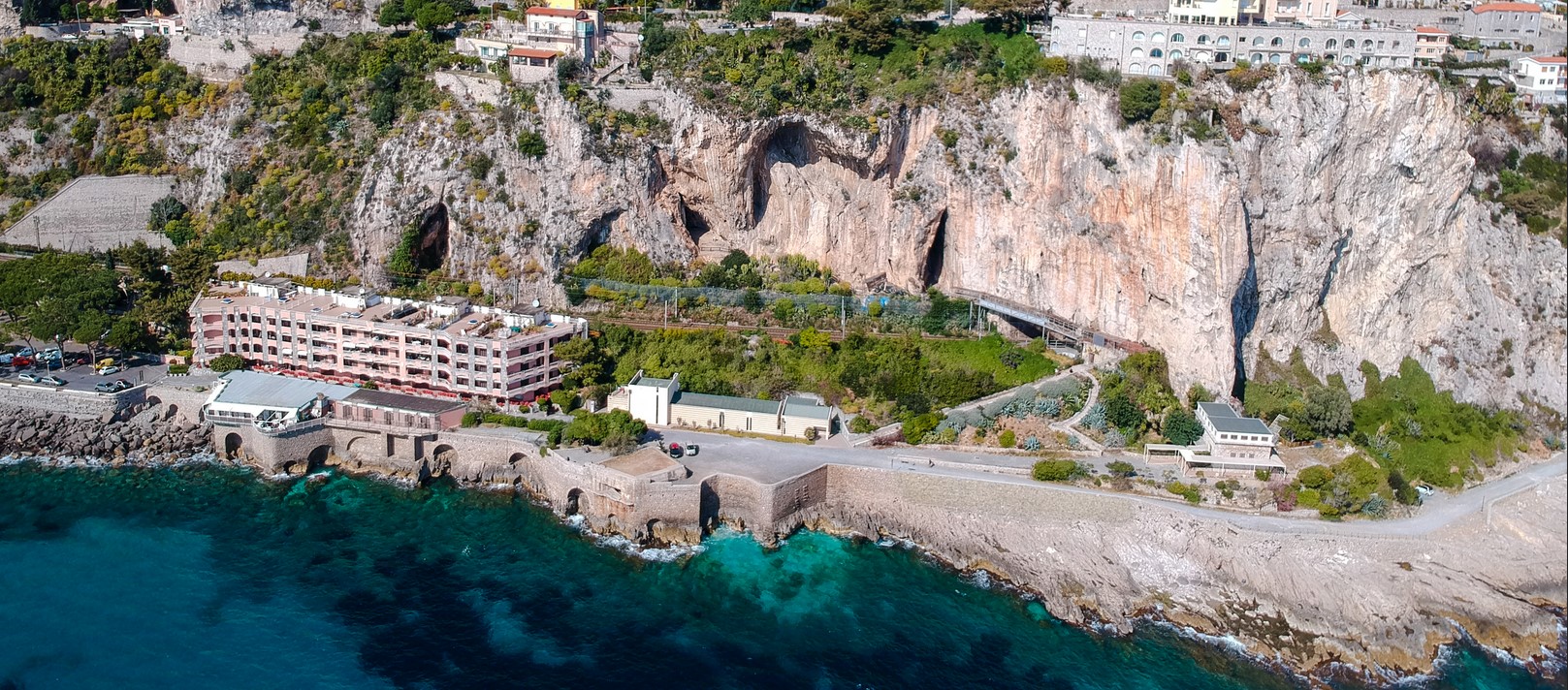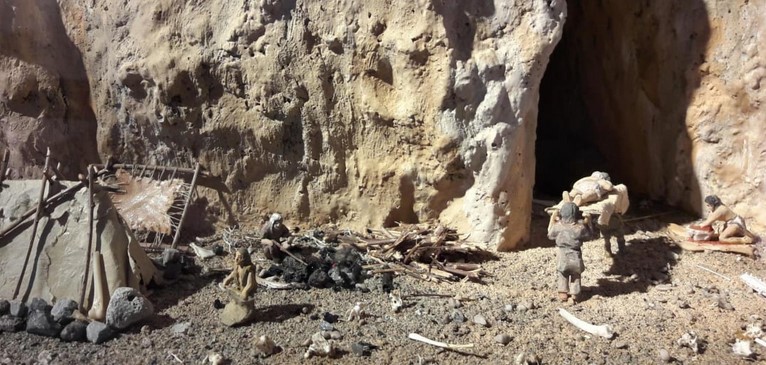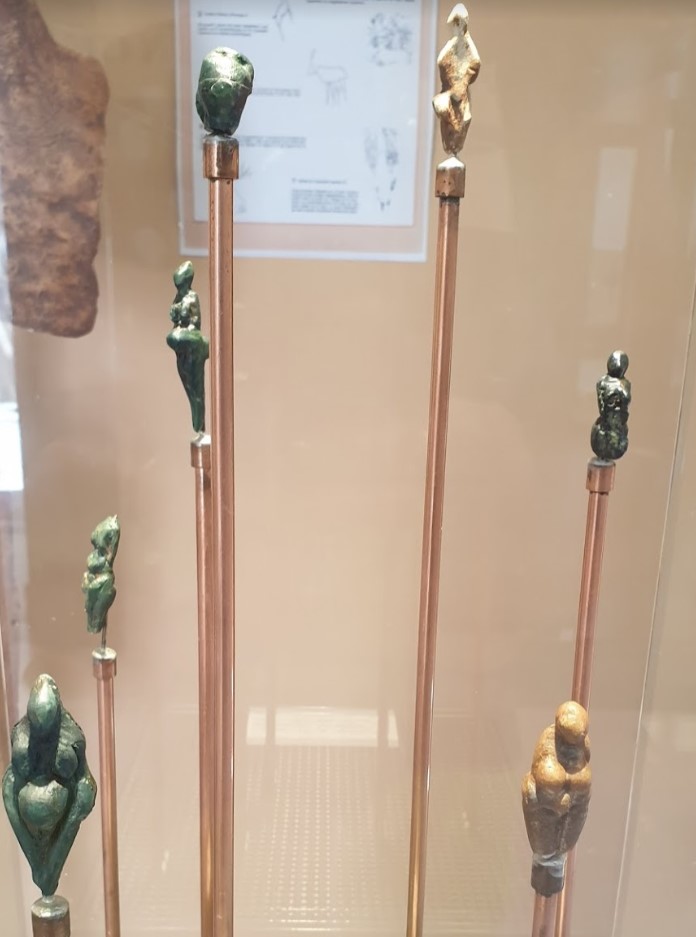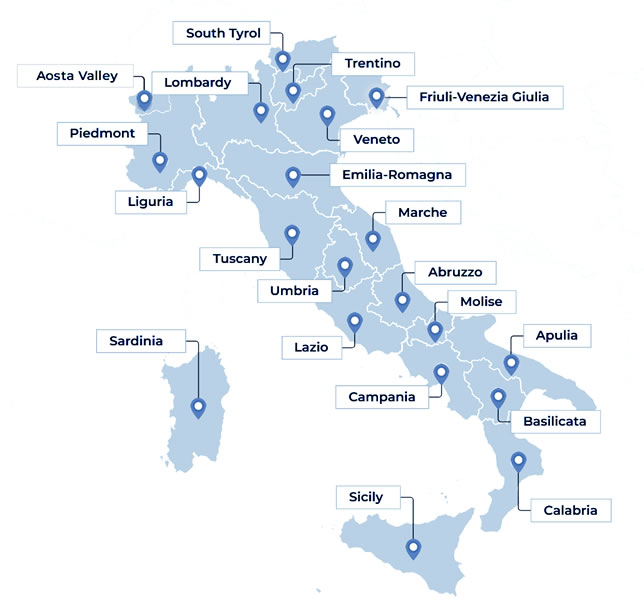

Explore Italy by place | region | time period
The Paleolithic Age » Balzi Rossi (Ventimiglia, Liguria)
At Capo Rossello in Sicily there are the first traces of the presence of man in the Italian peninsula (from about 2.5 million to about 120,000 years ago), while those of more recent Paleolithic are in the caves of the Balzi Rossi, near Ventimiglia. The graffiti found on the walls of some of these caves confirm the presence in Italy of tribes dedicated to hunting and collecting.
The complex of caves Balzi Rossi (from Ligurian dialect baussi rossi, red cliffs) is one of the most important archaeological sites of the early upper Paleolithic in Western Europe. It is located between Menton in France and Ventimiglia in Italy. Starting around 40,000 years ago, it was systematically and intensely populated. The caves are just above sea level, and have yielded burials, bone and stone artifacts, remains of fauna.

It is a complex of caves and rock shelters: Grotta del Conte Costantini, Grotta dei Fanciulli, Riparo Lorenzi, Grotta di Florestano, Riparo Mochi, Grotta del Caviglione, Barma Grande, Bausu da Ture, now destroyed, Grotta del Principe.

Just from the Barma Grande cave come 15 female statuettes so-called Venus or Venus figurines in reference to the Roman goddess of beauty Venus. But the use of this name is metaphorical as there is no link between the ancient figurines and the Roman goddess Venus; although they have been interpreted as representations of a primordial female goddess.

These Paleolithic sculptures of the female body were discovered by the antique dealer Louis Alexandre Jullien between 1883 and 1895. He sold artifacts to archaeological collectors and museums, but those finds caused a certain amount of concern among his customers because then Paleolithic art was not universally acknowledged. Thus, he decided to put them aside for next time. He had married and moved to Canada bringing with him all the archaeological finds.
During 1896 scientific opinion changed, but then he didn't live in Europe. In 1903 had already sold 7 Venus. In 1928 Louis Alexandre Jullien died. But in 1944, his daughter sold 1 statuette to the Peabody Museum at Harvard University. Shortly after, his grandchildren sold another 7 female figures. To date, 8 of these sculptures are housed in the museum Saint-Germain-en-Laye near Paris, while 7 in the Balzi Rossi Prehistoric Museum.
The Balzi Rossi Prehistoric Museum was founded in 1898 thanks to an initiative by Sir Thomas Hanbury, as a way to exhibit, in loco, the finds unearthed following works in Abbo quary in the preceding years.

We cannot determine the age of Venus because of missing archaeological context data. It is usually accepted that these figurines stem from the Gravettian, about 24,000 to 19,000 years old. These Paleolithic sculptures of the female body are of small dimensions, between 2.4 and 7.5 cm in height, and so-called steatopygous figure type because characterized by adipose accumulations in the areas of the buttocks and thighs, where other anatomical features and facial features are neglected.
Most of Venus have been unearthed in numerous European locations as Brassempouy, Lespugne, Willendorf, Malta, Savignano, and Balzi Rossi; but others have been found as far away as Siberia, and distributed across much of Eurasia.
Originally, they were housed in habitations, burials, and religious settings. The original cultural meaning and purpose of these artefacts is not known. According to some, they would represent the then existing female form; according to others they would have a magical and religious function, linked to the cult of fertility of women or land (Venus of Savignano). Hence the exaggeration of the organs and parts of the body connected with this function.
It is likely that such objects were a sort of amulets and served more than one purpose. When buried beneath the floors of dwellings, they may have served as foundation offerings to safeguard the home and its occupants. Figurines in domestic settings could have served a social function, perhaps as objects for exchange, or even used as toys. Those found in graves or shrines may have been representations of humans or deities associated with fertility.

In order to know more, you can visit:
- Wikipedia: [1]
This page was last edited on 7 June 2024

Open in Google Maps and find out what to visit in a place.
Go to: Abruzzo | Aosta Valley | Apulia | Basilicata | Calabria | Campania | Emilia Romagna | Friuli Venezia Giulia | Lazio | Liguria | Lombardy | Marche | Molise | Piedmont | Sardinia | Sicily | South Tyrol | Trentino | Tuscany | Umbria | Veneto

Text and images are available under the Creative Commons Attribution-ShareAlike License 4.0; - italystudynotes.eu - Privacy